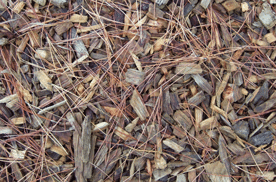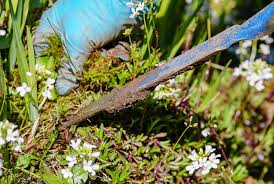1. Make Compost
Short version: Nature never throws anything away.
Longer version: Composting is the unusual silk purse from plant’s ear, something for nothing, win-win. You begin with garden, backyard and kitchen particles and end up with two benefits: 1) a fantastic soil modification, and 2) numerous green points for preventing the land fill.
It’s easy to fall under thinking that garden compost’s last name is bin, and that cautious layering and turning belong to the offer. Stacking shredded leaves in a corner counts too. Does “trench composting,” handy for those with little garden area, and so does bringing your kitchen area scraps to a place (try the nearby neighborhood garden) that will compost them if you can’t. I have a buddy in Manhattan, for example, who brings her coffee premises, orange peels and such to the Lower East Side Ecology Center at Union Square Greenmarket.
2. Use Garden compost
Spread it around plants to ward off disease; put a bit in your potting mix to include slow-release micronutrients; top-dress beds with it to improve soil structure no matter what type of soil you have; utilize it to assist bring back life to soil that’s tired from years of chemical abuse. Sprinkle it on the yard spring and fall to motivate the shallow lawn roots … It’s almost impossible to use excessive.
3. Plant Crops in Wide Beds
image
Crops are anything planted for collecting: veggies, cutting flowers, shrubs on hold to be transplanted … keeping these organized as securely as possible in beds that are not trod upon reduce weeding, saves water, enables the compost to be concentrated where it will do the most great and improves soil structure year upon year as the layers of raw material accumulate. These beds are regularly raised or at least confined neatly by boards or– I saw it when and am still impressed all these years later on– by long slabs of granite. Aesthetic appeals aside, the primary virtue of this cleanliness is simpler path upkeep. From the soil and plant perspective it’s the unique treatment that matters.
Ad – Continue Reading Below
4. Mulch
Mulch clothes the soil in a protective barrier that moderates temperature, saves water, helps keep soil-borne illness from sprinkling up and helps keep soil itself from sprinkling up– on your lettuce. Almost any natural mulch that will rot down into the soil is usually preferable to landscape fabric with some type of icing, but choosing the right mulch for each task is worth the additional effort.

(The specialized mulches for warming soil and/or showing back simply the best light upon your veggies are hardly ever eco-friendly. My experiments with them are continuous so all I can say at this point is: Remember that they work just when light falls on them; the more your garden looks like a jungle– no names, please– the less effective they will be.).
5. Feed the Soil, Not the Plants.
Short version: Processed food, consisting of natural junk food, has lots of calories and may include added vitamins. But it’s not terrific long-lasting nourishment, for numerous reasons we’ve learned and others we can so far just observe. Our bodies know the distinction in between consuming a carrot and taking a capsule of vitamin A. Exact same handle the soil.
Longer version: Plant health depends upon healthy roots; healthy roots depend on healthy soil for air, water and nutrients delivered in kinds plants can use. Soil rich in organic matter– compost!– is normally rich in nutrients and in the bursting life (fungis, germs, worms, etc.) that makes those nutrients readily available to the plants.
Ornamental plants in good soil rarely require included fertilizer, and crop plants that do need extra food require less of it when it’s launched gradually by friendly soil from things like rock powders, kelp and green manures. For an example of how this deals with nitrogen, one of the most crucial nutrients, here’s a Rodale Institute Research Report.
6. Share Something.
If you’ve got a garden, you’re abundant.
Got seeds? The Seed Savers Exchange isn’t just about vegetables; there’s an affiliated Flower and Herb exchange, too. Got flowers? Medical facilities won’t take them anymore (allergic reactions), however group homes, soup kitchen areas and– why not?– your community hardware shop may be thrilled with a bit of brightening up. Got produce? There’s a national umbrella campaign for vegetable gardeners who want to plant a row for the hungry, and many food banks, farmers’ markets and community gardens have actually established arranged contributions. However there’s no law that states you can’t simply offer your additional beans to anyone who genuinely wants them. Hunger isn’t constantly physical.
The garden itself is worth sharing too. Garden tours are popular charity events so if you’re up for the attendant stress, it’s most likely there’s a cause that’s looking for places. In my experience with these things there’s constantly a lot more preparation than I have actually allowed for … but likewise a lot more given back in new good friends, new ideas and billions of pats.
